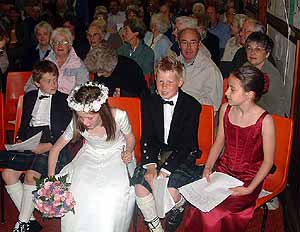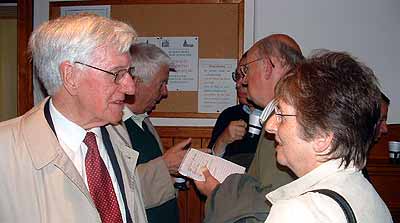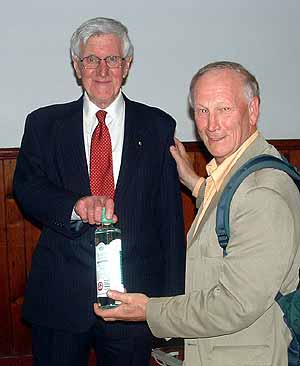Juniper Green in the Latter Half of the Nineteenth Century
On Thursday 7th June a packed Church Hall applauded the JG300 gala Queen and her court as they explained how and why they were chosen. Headmistress Karen Noble introduced the quartet of Zoe Allan (Queen), Katy Hill (Lady-in-waiting), Gregor Lockhart (Champion) and Mark Hemmings (Herald). The four explained what they had had to do to be chosen and then answered questions from the audience.
The audience then settled to the eighth of our history talks. It was a tour de force by Alastair Davidson on the village in the latter half of the nineteenth century based on Colinton Local History Society's original research.
Alistair talked about George Alexander who was promoted through army ranks for valour in the field, recognizing what an interesting character he must have been to meet in one of the early Juniper Green public houses. There had been trouble between the first Free Kirk minister and his Session but Dr Gardiner got the Session back on track and able to serve the community through the provision of schooling by 1849.
In 1850 the JG doctor (Dr Wilson) and his mother were murdered by Peter Pearson who had been released back into the community from Morningside Asylum. Pearson had sought help of the doctor one Sunday afternoon and the maid had let him into the house. But, when she returned home that night she could not gain admittance to the house. Next day she returned with friends and they found the doctor and his mother brutally murdered and the murderer sitting up in bed. Life was hard in Juniper Green and evidence of its rural character was found in a sentence of ten years hard labour for someone caught poaching in 1851.
In 1861 there were six different sorts of workers with rags in a mill of 200 people. The mills were changing around this time going over to steam power in the 1850s. But life did improve with the seventy hour week reducing to a sixty hour week by 1891.
In 1890 there was a national rail strike but Caledonian railwaymen did not join the action and the villa owners of Juniper Green got together and gave 25 guineas to the footplate man for staying at his post.
By 1891 the census tells us that Juniper Green could boast an architect, solicitor, umbrella maker, gold beaters and carriage makers as well as a number of doctors. Two thirds of the population were unskilled or semi skilled. Ten per cent worked in small mills but the majority were employed in larger mills of which there were 3 in or around Juniper Green.
Alistair was particularly complimentary about the work of Dr Peter (Patrick) Gordon. He worked tirelessly, after the death of his wife, to bring public health improvements to Juniper Green.
The evening ended with a cup of tea and time to ask the speaker a few further questions.



